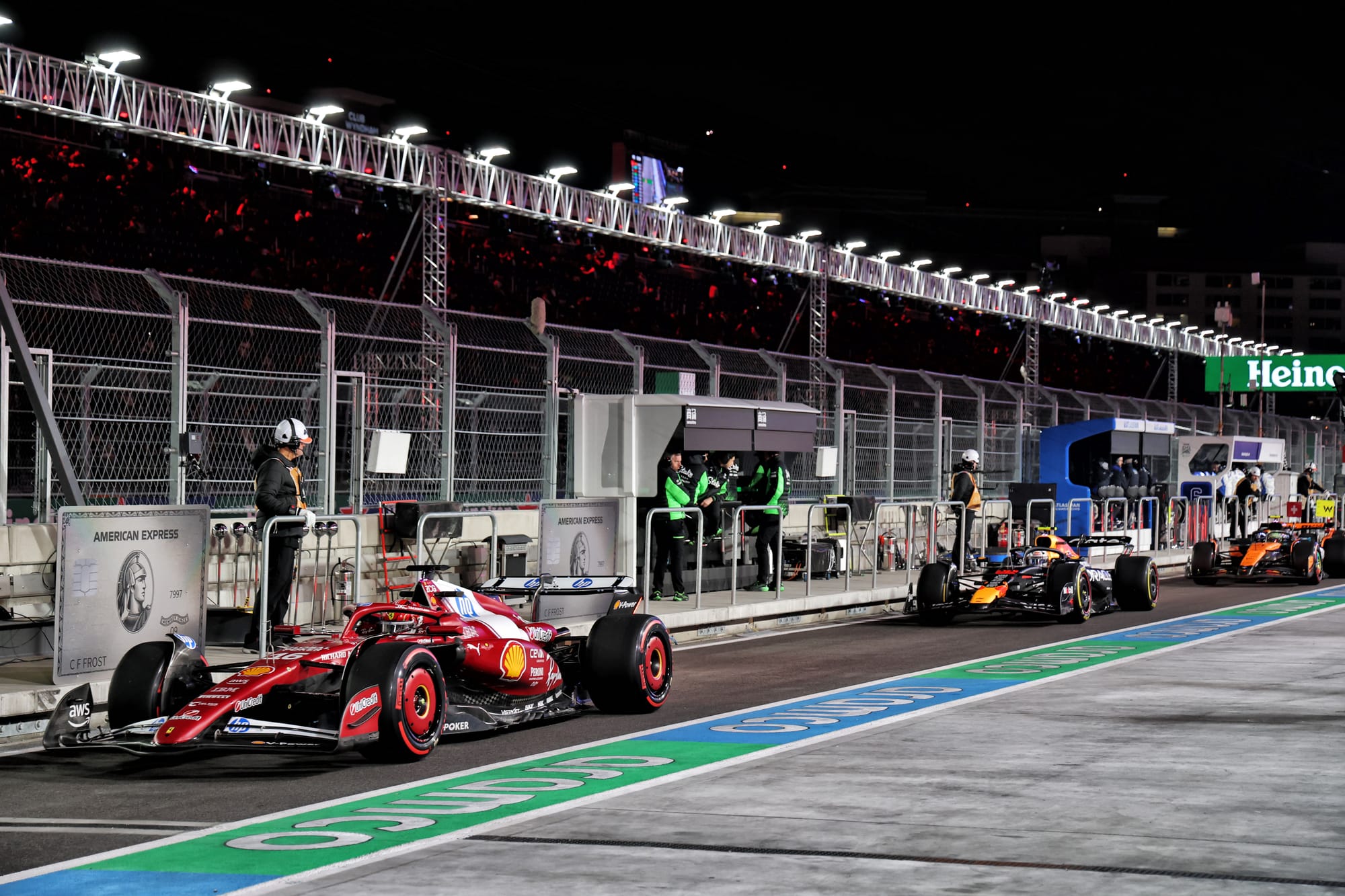No long running in FP2 and a big mixture between drivers who got a low-fuel lap in on the soft tyre and those who didn't: that made reading the form on the first day of running at Formula 1's Las Vegas Grand Prix extremely tentative.
We can probably say that the top four teams are closely-matched and that the Alpine and Williams seem to be relatively competitive on this combination of low grip and corner type.
Lando Norris and Kimi Antonelli were the only two drivers from the top four teams who got their soft C5 laps in before the red flag for the suspected problem with the Turn 16-17 drain cover. As such, they were first and second, respectively in the headline times, separated by hundredths.
But George Russell was about to eclipse their times before having to abandon for the red flag while Oscar Piastri, Max Verstappen and the Ferraris were all either on outlaps or early into their timed laps when forced to abort.

Although FP1 ran more smoothly, the run programmes were so varied, on a track featuring a spectacular grip evolution from an extremely low baseline, that those times didn't tell a clear story either.
Charles Leclerc headed that session with his eighth lap on a set of softs. In FP2, Leclerc's third-fastest time, just 0.1s off Norris, was set on mediums. So the portents of a strong Ferrari performance are there - on a track at which it traditionally goes well - but with so many caveats as to make it almost meaningless.
McLaren's big concern coming here was a repeat of the front-tyre graining which so limited it last year. Pirelli's 2025 tyre has been designed to be more graining resistant, but if the problem was going to rear its head anywhere, it was always going to be in Las Vegas with the combination of very low grip and cold desert night time temperatures.
So there was concern in the first session as both Norris and Piastri reported graining a few laps into their runs on the mediums. But in the higher-grip (but still low) conditions of FP2 the problem seemed to have disappeared.
Mercedes was running with a notably bigger wing than the Monza-type wings used by McLaren, Ferrari and Red Bull. As the track grip came up, it was beginning to look like this was increasingly to its benefit. But the value of straightline speed with such an incredibly long back straight makes it far from clear what the optimum level will turn out to be.
Certainly, the Mercedes gets its tyres up to temperature quicker than other cars and that should be a valuable trait here, one which was central to Russell's victory last year. But he was playing that down a little, saying: "This car is more competitive than last year's over the season, but maybe not as good here. We are in the mix, there or thereabouts, but we're not exactly setting the track alight."
It seems like there may be no perfect preparation strategy for the soft tyre. A single prep lap may not be enough to have the fronts fully ready. Those cool temperatures and that long, tyre-cooling straight make it extra tricky. A second prep lap can see the rears running out of grip before the end of the flying lap.
There is a temperature problem across the front axle as well: between the axles, the outer front is getting a much harder work out than the inner one and so is coming up to working temperature much earlier.
With a temperature mismatch across the front axle, there were multiple lock-ups and extensive use was made of the escape roads by almost everyone. The approach speeds are so high, the corners so slow, with not much downforce to help out, that the lock-ups were big when they happened. Then there was the gusting wind which, just like in Baku and at Interlagos, was randomising things further.
Because the grip was still ramping up so fast in FP2, the times were still in that fruit-machine phase typically seen only at the beginning of first practice - where whoever crosses the line is at or close to the top but has fallen out of the top 10 before they complete their next lap.
Obviously, this has potential major implications for qualifying if the grip evolution continues to be so drastic. Going out last - as Russell did here last year to set pole - is hugely tempting. But it also leaves you extremely vulnerable to yellow or red flags on a circuit which invites them.
"I think we need to see if it’s still like this in FP3," commented Antonelli, "but if the evolution has tailed off it won't be so risky."
Getting things right this weekend is probably going to involve more luck than usual.



